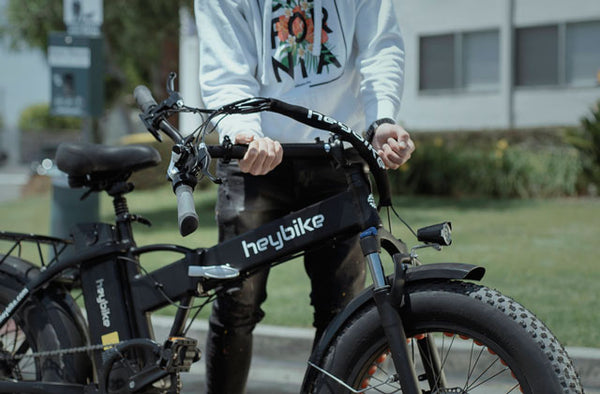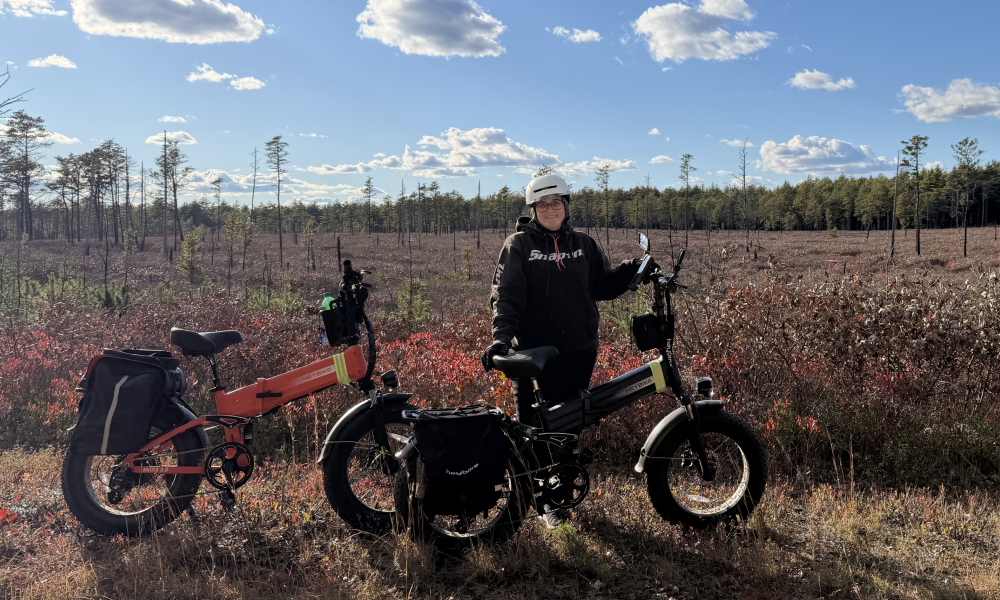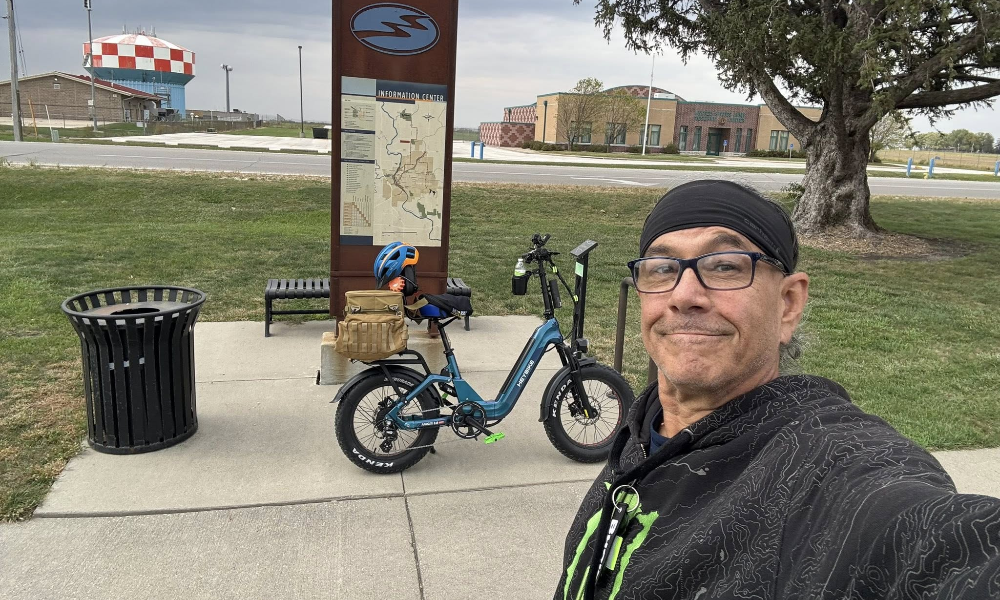Have you ever experienced hand numbness or discomfort during a bike ride? Or felt like you didn't have enough control over your bike? The culprit could be your bike handlebars. A good set of handlebars can make all the difference in your riding experience, providing comfort, control, and versatility.
With so many different bike handlebar types on the market, it can be overwhelming to choose the right one. Don't worry, though - we've got you covered! In this guide, we'll explore the world of bike handlebars, discussing the pros and cons of each type and helping you choose the perfect set for your needs.

What Are the General Rating Factors for Bike Handlebars?
Let's look at what to consider when selecting the perfect handlebar for your bike. With so many different types of handlebars available, it can be challenging to determine which one is right for you. But fear not! We've got you covered with these essential general rating factors.
Comfort is key
When it comes to choosing a handlebar, comfort is paramount. After all, you don't want to be uncomfortable during long rides or daily commutes. Some handlebars are designed with more padding for a cozier feel, while others mimic the natural position of your hands for a more comfortable grip. Which do you prefer?
Versatility is essential
Are you planning to use your bike for different types of riding? If so, a versatile handlebar is a must. You want a handlebar that can be adjusted to suit different riding styles, such as mountain biking or road cycling. Some handlebars are explicitly developed for certain forms of riding, so consider what kind of riding you plan to do before making your selection.
Leverage matters
The degree of control over your bike is another critical factor to consider. A handlebar with a broader grip provides more leverage, which is useful when navigating tight turns or uneven terrain. Conversely, a handlebar with a narrower grip can offer more control at high speeds. Which do you prefer?
Speed or comfort?
If you're a serious cyclist or racer, you may want to consider the aerodynamics of your handlebars. A more aerodynamic design can reduce wind resistance and improve your speed. Keep in mind, though, that more aerodynamic handlebars may not be as comfortable as other types. Which do you value more: speed or comfort?
Control is crucial
Finally, think about the level of control you have with your handlebars. This is especially important when riding in challenging conditions like wet or icy roads. A handlebar with an ergonomic design can provide better grip and control but at the expense of comfort. Do you prioritize control over comfort?
You now understand bike handlebar evaluation criteria. What matters most to you? Is it handlebar comfort, versatility to adapt to varied riding styles, leverage, aerodynamics for speed, or control in adverse conditions? You may want a handlebar that balances these variables. You can choose the right handlebar by comparing your tastes to these factors. Choose carefully, the right handlebar can improve your cycling experience.
6 Common Bike Handlebar Types Explained
Looking for the right handlebars can be overwhelming since the market has several options. But fear not, we're here to help! This section will explore six common bike handlebar types, outlining their key features, pros, and cons.
1. Flat Handlebars
Flat handlebars are considered the standard type of bars in bikes. These horizontally-flat bars can be found in kids' bikes and are fancied by cross-country riders due to their versatility.
Pros
- They offer enough space to add accessories such as phone holders, lights, and brake levers
- Light and relatively inexpensive when compared to other levers
- Their narrow size makes them better for tight spaces
- Offer effective weight distribution, making it easier to climb small hills
Cons
- Not ideal for top speeds
- Are not suited for tricky and risky expeditions
2. Riser Handlebars
Riser handlebars are an intuitive variation of flat handlebars. Instead of being straight throughout, these handlebars angle upwards on each end, allowing riders to assume a more upright posture. These bars are wider than flat handlebars for enhanced ergonomics and stability. They are common in mountain bikes.
Pros
- Provide greater control due to their wider size
- Allow riders to assume an upright posture for better visibility and comfort
- Provide proper weight distribution ideal for trail and free riding
- Offer plenty of space for attaching accessories
Cons
- Bad aerodynamics due to increased resistance against wind
- Not ideal for small spaces due to their wider size
3. Bullhorn Handlebars
As the name suggests, Bullhorn handlebars extend from the stem horizontally and curl upwards on either end to look like horns. Besides offering fascinating aesthetics, these bars offer an aggressive riding position.
Pros
- Allow riders multiple hand positions for efficient cycling on different terrains
- Their narrow profile allows riders to navigate easily through traffic
- Offer excellent aerodynamics by allowing riders to get lower and reduce wind resistance
- Are compatible with various conventional brake types
Cons
- Hands are always far from brake levers making braking more challenging
- Steering may feel jolty for beginners due to the bars' narrow profile
4. Drop Handlebars
Drop bars are synonymous with road bikes and have been used in various racing and adventure bikes. These bars extend horizontally from the stem and curve down towards the rider.
Pros
- The hooked shape encourages riders to assume a better tuck position for great hill descents
- Offer excellent leverage for hill climbing and peddling
- Offer multiple hand positions for enhanced comfort
- Ideal for adventure and gravel terrains
Cons
- Tucked position means less awareness of the surroundings
- Not ideal for tight turns and trail biking
5. Butterfly Handlebars
Butterfly handlebars are designed to assume a figure eight-like shape, making them great for trekking and touring bikes. These bars offer multiple hand positions and provide ample space for accessories such as maps, horns, phone holders, and bags.
Pros
- Offer multiple hand positions for long adventure rides
- Plenty of room for various bike accessories
- Great comfort
Cons
- Heavier than the other types of handlebars
- Not ideal for speed bikes
6. BMX Handlebars
BMX handlebars are designed to take a lot of punishment and are usually found on bikes used for stunts and tricks. They usually extend further from the stem, offering additional support to the undersized frame. A cross brace joins the bars to increase their stability and stiffness.
Pros
- Robust and foul-roof design for handling all kinds of knocks and bail
- Offer rigid grip for stunts and tricks
- Relative cheaper than other bike handlebars
Cons
- Less versatile
- Not great for long-distance riding
Which Handlebars Should You Choose
The type of handlebars you choose will depend on the riding adventure you are looking forward to undertaking and your riding style. For instance, if you enjoy uphill rides, Bullhorn bars offer unrivalled leverage when peddling uphill. For dare-devil stunt masters, BMX handlebars will provide the rigidity and stability you need. If you're more into speed cycling, you won't go wrong with the hooked bike handlebars.
Conclusion
Now that you comprehensively understand the various handlebar types, we hope you choose the types of bike handlebar that resonate with your riding style. Whether you're a triathlete, mountain biker, stunt master, or road cyclist, finding the right handlebars type will significantly impact performance, versatility, and comfort.
Latest Stories
3000 Miles of Pure Joy: Greg’s Story with the Heybike ALPHA | Heybike Community
At 68, Greg conquered 3000 miles on his Heybike ALPHA ebike through Minnesota's trails. Every ride brought him fun, fitness, and freedom!
Freedom on Two Wheels: Ryan's Thrilling Rides on Mars 3.0 | Heybike Community
Ryan Davis shares his riding story on Heybike Mars 3.0 ebike. Have a look at his all-terrain adventures to see how the Mars 3.0 brings him true freedom.
From Walker to Rider: Darrel Rediscovering Youth and Joy on Ranger 3.0 Pro | Heybike Community
At 59, Darrel Abbe found youth and joy again riding the Heybike Ranger 3.0 Pro electric bike with his wife. Explore their story and the thrill of e-biking.



Share:
Learn the Benefits of 4G APP Sync for Ebikes
Choose the Best Folding Bike Locks